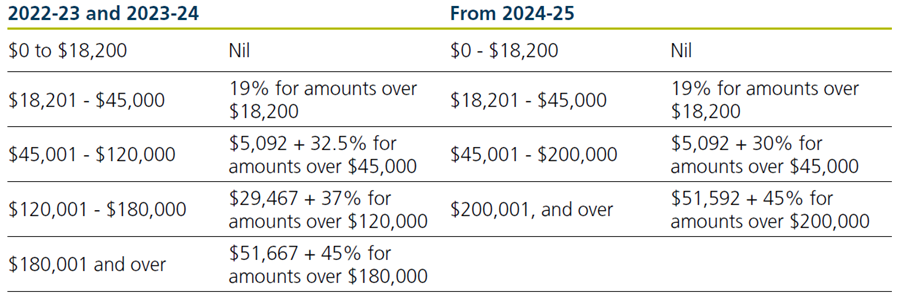Summary
The May 2023 budget yet again, proves that Australia is the ‘Lucky’ country. Thanks to a huge revenue windfall due to record low unemployment rates and a spike in commodity prices, the Treasury Department are forecasting a $4 billion budget surplus this year, the first in 15 years. This is a massive turn around, as a $37 billion deficit was forecast just seven months ago.
Despite the surplus, Treasurer Jim Chalmers showed considerable financial constraint and released a very targeted cost of living support package of $14.6 billion for the most vulnerable. For middle income Australia, while there was not a lot of direct support, it was more about what was not mentioned in the budget. There was no mention of the Stage 3 tax cuts which are due to take effect on 1 July 2024. This seems to be a tacit approval that these tax cuts will proceed as planned, though we recognise that there will be another budget night before the implementation.
Key Points
While the list below is not exhaustive, we provide some of the key takeaways from the night.
Cost of living
- Up to $500 per household for one off energy bill relief. This will be run in conjunction with the state governments and will vary state to state.
- An additional $3.5 billion has been allocated to Medicare to increase the bulk billing supplement paid to doctors and to provide cheaper access to medicines.
- Incentives for households to switch from gas appliances to electricity and to adopt solar panels and more efficient windows.
Aged Care
- An additional 9,500 Home Care Packages will be made available in 2023-24.
- A commitment to increase award wages by 15% for many aged care workers, including registered nurses, enrolled nurses and nursing assistants.
- An extra $827 million over five years to continue to improve the delivery of aged care services and respond to the final report of the Royal Commission into Aged Care Quality and Safety.
Social Security
- From 20 September 2023 a number of support payments, including JobSeeker, Youth Allowance, Austudy and ABSTUDY and Parenting Payments, will increase by $40 per fortnight.
- There is also an extension of the higher JobSeeker Payment rate for singles to now include those aged 55 and older.
- To help address the current rental affordability challenges, the Government announced an increase to the rental assistance scheme of 15%.
Superannuation
- From 1 July 2025, earnings on an individual’s total superannuation balance of more than $3 million will attract an additional 15% tax.
- The minimum drawdown payment rate from account-based income streams halved from 1 July 2019. There was no extension of this in the budget so pension payments may need to be increased back to the minimum levels.
- From 1 July 2026, rather than paying Superannuation Guarantee (SG) payments quarterly, employers will be required to make the payment on the day salaries and wages are paid.
Tax
- As mentioned earlier there were no amendments announced to the planned Stage 3 tax cuts that take effect 1 July 2024.
If they proceed as planned, the new personal income tax rates will be:

Small Business
- The Small Business instant asset write-off has decreased from $40,000 to $20,000 for the 2023-24 financial year.
- Businesses with annual turnover of less than $50 million will be able to deduct an additional 20% of the cost of eligible assets that support electrification and more efficient use of energy up to $100,000 of total expenditure per asset.
For more information contact us on 03 8610 6396
Keep Wealth Partners Pty Ltd (AFSL 494858)
This information is of a general nature only and may not be relevant to your particular circumstances. The circumstances of each investor are different, and you should seek advice from a financial planner who can consider if the strategies and products are right for you.







